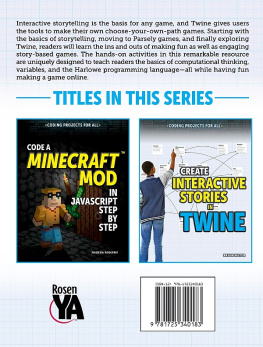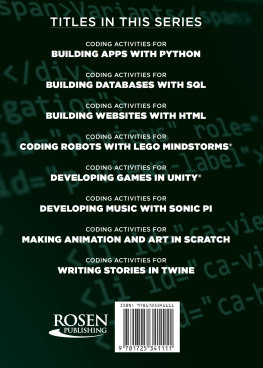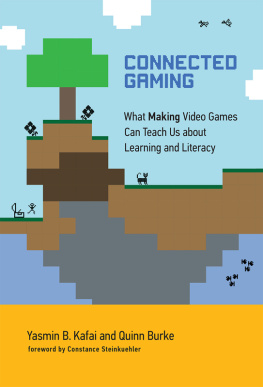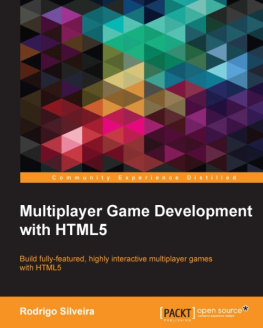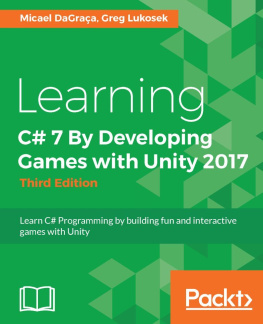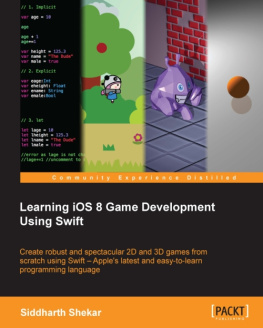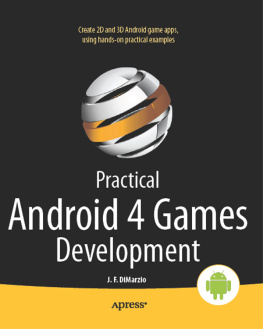
Published in 2020 by The Rosen Publishing Group, Inc.
29 East 21st Street, New York, NY 10010
Copyright 2020 by The Rosen Publishing Group, Inc.
First Edition
All rights reserved. No part of this book may be reproduced in any form without permission in writing from the publisher, except by a reviewer.
Library of Congress Cataloging-in-Publication Data
Names: Mayer, Brian, author.
Title: Create Interactive Stories in Twine / Brian Mayer.
Description: First edition. | New York: Rosen Publishing, 2020. | Series: Coding projects for all | Includes bibliographical references and index. |
Audience: Grades 712.
Identifiers: LCCN 2018057497| ISBN 9781725340176 (library bound) | ISBN 9781725340183 (pbk.)
Subjects: LCSH: Computer gamesProgrammingJuvenile literature. | Twine (Computer program)Juvenile literature. | Computer adventure gamesJuvenile literature. | Plot-your-own storiesJuvenile literature.
Classification: LCC QA76.76.C672 M3635 2020 | D DC 794.8/1525dc23
LC record available at https://lccn.loc.gov/2018057497
Manufactured in the United States of America
Twine is an open-source software created by Chris Klimas, and its reference to and use in this book does not imply a recommendation or endorsement of this title by Chris Klimas or Twinery.org.
CONTENTS
INTRODUCTION
H ey there! First things first, I want to give a big thank you for joining me on this game design journey. The goal of this book is to give you a chance to share your voice and creativity. And, if you want to get really excited, it will allow you to take your first steps as a game designer and story crafter! So lets get you started creating interactive fiction.
Over the course of this book, youll get a chance to develop interactive fiction games in a number of different formats. While the overall goal of this book is to get you comfortable with creating and coding digital interactive fiction games in TwineI bet you couldnt guess that from the titleyoull have to learn to walk before you can run. Well start off by working on developing your story and gameplay nondigitally before jumping into coding with Twine.
This is an important step because building a good understanding of how to develop and refine your gameplay before you begin coding will help your final game truly shine!
Right off the bat, I want to let you know there are a few things that this book will not do for you:
This book will not make you rich and famous.
This book will not do your laundry.
This book will most definitely not make you taller unless you stand on it.
But there are some things that I can promise you this book will do!
This book will introduce you to interactive fictionwhat it looks and feels like.
This book will get you started making your own games with both paper and pencil and Twine.
This book will support a wobbly table or chair.
So why should you be excited about creating interactive fiction? That should be obvious! Interactive fiction gives you an easy and fun way to start creating games that other people can play. Your imagination is the limit to the settings and stories that people playing your game get to explore, interact with, and play their way through. And thats not even the best part: doing all that doesnt require a backbreaking effort! And this book will help you get there.
This book will focus on the building and developing of interactive fiction games (more on that later), and although we wont spend too much time on story-writing skills, youre going to get some tips and advice on writing along the way.
The end goal of this book is to get you making games in Twine. If youre not familiar with Twine, you better get ready! Twine is a free, open-source program that allows you to easily with just some small snippets of coding and stylingcreate your own interactive fiction games for others to play. It is a tool that gives you a voice and a chance to be creative by allowing you to make worlds and stories for people to explore, interact with, and experience!
By learning just a few small steps, Twine allows you be a storyteller and a game designer. It gives you the power to create an experience for the reader, who is also the player. Excited yet? Youll be able to create a story for your friends and family to explore and interact with!
For this book well start here: thinking about and building a story that will serve as an interesting game for the reader. The first step in your journey is to build these games in a choose your own path style. Then, we will build in some complexity and openness by developing that game in the Parsely game system. Lastlyafter youve developed your story and gameplay in these two systemsyoull learn how to code them into Twine!
When youre all done, feel free to approach your designs as you see fit! Thats half the fun of making interactive fiction. But working them out first, nondigitally, helps you plan and prepare for creating a great interactive fiction game.
The book will have a bunch of awesome activities that you can follow throughout, and theyll help you build and develop an example interactive fiction game. There will also be activities to help you build and develop your own unique game. Many of the activities in the book will build upon earlier ones, so I really recommend you follow along in order the first time through. But I definitely cant stop you! As you get more comfortable with creating your own interactive fiction, you can go back through and focus on the activities that help you the most.
Chapter One
STARTING ANALOG: AKA, KICKING IT OLD SCHOOL
T ake one part game and one part story, then throw them in a blender. The goopy concoction that comes out is what we call interactive fiction. Mixing narrative and games is not unique to Twine. Most video games and tabletop games have some form of story that goes along with the gameplay. While many people first think of the epic tales found in video games franchises like The Legend of Zelda, World of Warcraft, and The Elder Scrolls, nondigital games also have a story of their own. Whether you are building your property empire, clashing with other landowners in Monopoly, raising a family and growing your farm in Agricola, or hosting an epic fantasy campaign in Pathfinder, nondigital games offer a variety of experiences that allow players to become a part of a story.
Those examples are games that tell a story through play. Interactive fiction is a story that provides a game as you go through. In their simplest form, interactive fiction games are very close to standard stories. At certain points, important or interesting decisions are made. But, those decisions are not made by the characters in the story. Instead, they are made by the readerimagine that! Its the readers who decide the direction that the story goes, and they make those decisions as they explore and play through the story. These decisions can be as simple as choosing between which one of two doors to enter. Or, the decisions can be more complex and require multiple steps to complete. Good interactive fiction stories will provide prompts and hints to help the player make the right decisions and make it to the end. Because who wants to fail to complete the story?
As a designer, its your job to strike a balance between telling a good story and making a good game. To do that, you need to know that there are some hidden parts of stories and games that make them good.
Now comes the part of the book when I throw a whole bunch of concepts at you. All of these play an important part in building good interactive fiction games. Dont stress yourself on trying to achieve all of them, but do try to keep them in mind. As you build more games, theres no doubt youll get better at incorporating them into your designs! For your first few designs, try to just focus on just one or two elements. As you get more comfortable, expand your designs to incorporate more. Soon, youll be a master!
Next page
